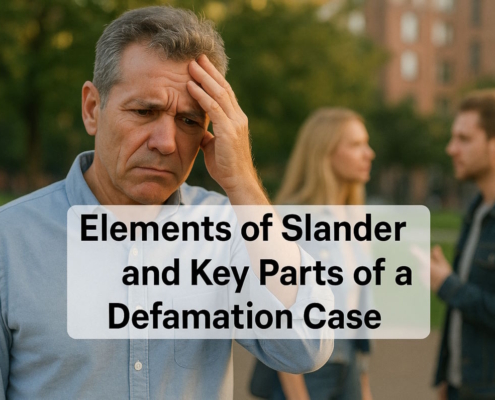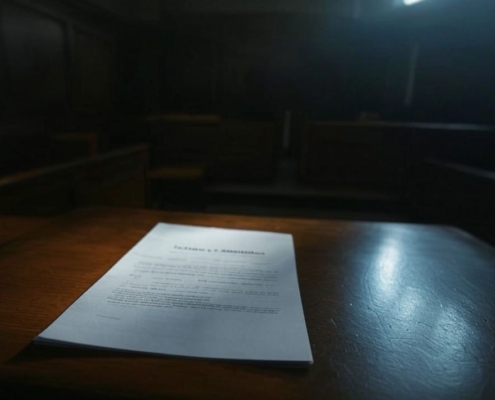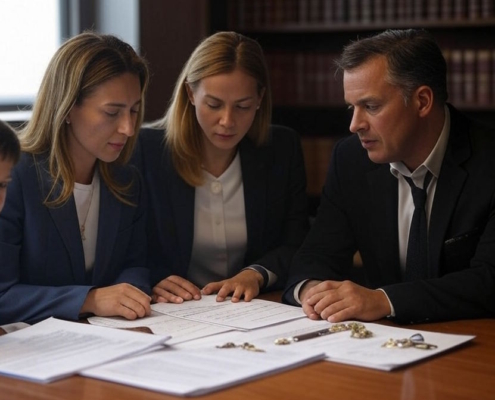How Does Probate Work?
If someone dies and leaves assets like bank accounts, real estate, and investments, they need to go through the probate process. When someone dies, their estate, whether left with a will or without, must go through the legal process known as probate.
In most cases, a person’s will appoints an executor or administrator to carry out the executor’s or administrator’s duties during probate. To do this, one must gather the dead’s assets, use them to settle any outstanding debts from their estate, and then distribute the remaining assets to the designated beneficiaries.
The Process of Probate
Administration of a deceased person’s estate entails examining and transferring their assets. This process is known as probate. It is usual practice for a probate court to examine a decedent’s assets upon their death. When it comes time to divide and distribute assets to beneficiaries, this court makes the ultimate decision. Examining whether the decedent left a valid will is the first step in a probate process.
Oftentimes, the decedent has left behind written instructions outlining the distribution of their assets upon death. But sometimes people who pass away don’t even leave a will. Both of the cases we’ve outlined below involve unique elements.
Considerations in Probate Law
The law that establishes the proper distribution of an estate is known as probate law. The necessity and procedure for probating an estate are subject to the specific laws and statutes of each state. Here are some common factors:
- Estate size – any amount over $3,000 is subject to probate in some states and up to $200,000 in others.
- If any real estate is included in the estate.
- If a spouse is still alive or not.
- How many vehicles are in the estate.
- How many heirs are named in a will and whether or not a will is present.
- The estate’s obligations, including any liens, debts, or taxes.
Using a Will for Probate
“Testator” is the proper term for a deceased person who left a will. It is the executor’s duty to commence probate proceedings upon the testator’s demise. Usually, a member of the executor’s family steps forward. Additionally, the will can include information about the designated executor.
It is the executor’s duty to submit the will to the court that handles probate matters. The statute of limitations for executing a will after death might vary from one state to the next. The process of probate begins with the filing of the will. The will of the decedent must be legitimate and acknowledged as their final testament through the probate process, which is a court-supervised procedure. Any individual named as executor in a will does not have legal authority to do anything on behalf of the dead until the court formally appoints that person.
The Executor
It is common practice for a will to name a court-approved executor or legal representative. It is this individual’s duty to identify and keep track of the deceased’s possessions. The executor is required by law to determine an approximate value for the estate based on the value as of the date of death or an alternate valuation date, as laid out in the Internal Revenue Code (IRC).
In most cases, the court in the county where the decedent resided when they passed away is responsible for overseeing the distribution of any assets that must go through the probate process. Real estate is an exception. It may be necessary to broaden probate to any county where the property is located.
The executor is also responsible for disbursing the estate’s funds to settle any outstanding debts or taxes. In most cases, creditors have a window of opportunity—roughly one year from the date of death—to assert their claims to the estate for any outstanding debts. If the executor rejects a claim, the beneficiary can take the matter to court, where a judge appointed to hear probate cases will decide the claim’s merit.
Additionally, the executor must submit the decedent’s final individual income tax returns. It is possible for any unpaid estate taxes to be due within a year of the decedent’s passing. Following the completion of an inventory, valuation, and payment of all debts, the executor will petition the court for permission to distribute the remaining assets to the designated beneficiaries.
An administrator may opt not to start probate if the decedent’s debts exceed their assets, a situation known as insolvency. There may be a statute of limitations for having a will processed through probate, however this varies from state to state. The minimum amount required to file a probate petition varies by state.
Probate Without a Will
Intestate death occurs when a person passes away without leaving a valid will. Another definition of an intestate estate is one in which the court has declared the will to be invalid. Distributing assets in accordance with state laws is a part of the probate process for intestate estates. It is debatable whether probate is required when a decedent leaves no property behind.
The normal first step in a probate court process is to appoint an administrator to manage the deceased’s estate. In the role of executor, the administrator is responsible for collecting any claims made against the estate and settling any debts that may remain.
Finding the decedent’s surviving spouse, children, and parents is one of the administrator’s primary responsibilities. Ascertaining the nature and distribution of assets to legal heirs is the responsibility of the probate court. Most states’ laws regarding probate allocate assets to a deceased person’s surviving spouse and children.
“Escheatment” is the legal term for the transfer of assets to the state. There is usually a deadline by which an heir who wants to claim assets can do so in most states.
Spouses as Co-Owners of Real Estate
If one spouse dies without leaving a will, the other may be able to claim their share of the marital estate under community property laws. The surviving spouse is usually considered the first in line for distribution. The distribution of assets is typically based on the number of surviving children, regardless of marital status. Distribution considerations may extend beyond spouses and children to include other relatives.
Probate rules for intestate estates typically do not include close friends of the decedent as beneficiaries. Nonetheless, the surviving spouse would automatically become the owner of any joint asset if the decedent had a joint account with a right of survivorship or owned property jointly with another.
Must There Be a Probate in Every Case?
After someone dies, it’s crucial to know if probate is necessary. Finalizing an estate’s probate can be a time-consuming process. It will take more time to settle and distribute assets in an estate that is complicated or contested. A higher price tag is associated with a longer duration.
It usually costs more to probate an estate that has no will than one that has a valid will. Nevertheless, both the time and money needed for each remain substantial. Furthermore, avoiding probate would guarantee that all settlements are done privately, as the decisions of a probate court are publicly recorded.
When a testator dies, the laws of each state determine whether or not probate is necessary. Probate is necessary for estates with a certain value in some states. Probate may not be necessary, according to Texas law, for estates with a value of less than $75,000.
One alternative to going through probate is using an affidavit to claim assets from a small estate that does not require as much paperwork. It is not common practice to initiate probate when a decedent’s debts exceed their assets. Instead, other measures can be explored.
Due to preexisting beneficiary designations in contracts, some assets can avoid probate altogether. Probate is not required for assets with designated beneficiaries, such as pension plans, life insurance payouts, 401(k)s, medical savings accounts, and individual retirement accounts (IRAs). Similarly, the probate process does not apply to jointly owned assets that have a right of survivorship.
The establishment of a trust is another common strategy for avoiding probate.
In general, it might be wise to keep the probate process expenses to a minimum. Professional service hours, court fees, and administrative costs can all add up. It is common practice to have an easily authenticated will in order to expedite the distribution of assets during probate.
What Is the Average Cost of Probate?
Both your state and the attorney you choose will determine how much money you will need to pay for probate. Legal professionals often charge a flat rate or by the hour to handle estate processing in certain states. In some cases, they will ask for a portion of the estate as payment. In addition to paying the probate costs, you will also be responsible for paying off any outstanding debts, as well as any filing or court fees. Another potential expense is an inheritance tax. When planning for the end of your life, you should look into how much probate costs in your state.
What is the Best State for Probate Laws?
Although each state has its own set of rules regarding the distribution of a decedent’s assets upon death, 18 of them have embraced the Uniform Probate Code: Idaho, Arizona, Alaska, Minnesota, Colorado, Montana, South Dakota, Nebraska, Utah, New Mexico, Maine, Michigan, Minnesota, Pennsylvania, Hawaii, South Carolina, New Jersey, North Dakota, and Massachusetts.
Final distribution of assets from probate
There can be no official closing of an estate’s probate proceedings until all assets have been distributed. To put it simply, the final distribution is when the assets that have been probated are given to the person who is supposed to receive them. In this case, knowing that some assets are subject to probate and others are not can help.
Assets that are subject to probate
The probate process is a way for a court to distribute the assets and property of a deceased person after they have passed away. This category often goes by the name “probate assets.”
The assets that typically constitute a probate estate include the following:
- Jewelry
- Vehicles and automobiles
- Collectibles and artwork
- Financial accounts such as checking and savings
- Bonds and stocks
- A few categories of property
In real estate, the question of whether or not probate is necessary depends on the ownership structure. For instance, in many cases, a joint owner (like a survivor spouse) receives the property without going through probate. How the property’s deed is structured determines this in large part. Probate is applicable to tenants-in-common property because the decedent’s share can be distributed to heirs separately from the other owners.
Assets that are not subject to probate
To better grasp probate assets, it is helpful to first identify what they are not. Everything that is not subject to the probate process is considered non-probate assets. Not included in the decedent’s probate estate are assets that typically transfer automatically to a beneficiary or other party upon the owner’s death. These include things like joint ownership, the ability to pay or transfer ownership upon death, assets with a named beneficiary, and assets held by a trust.
Here are a few common ones:
- Things like 401(k) plans and life insurance policies allow policyholders to name specific individuals or organizations as beneficiaries.
- Anything that a Trust owns
- Deeds or investments that are payable upon death or transferred
- Investments in a retirement plan
- Interests in real estate that are transferable
- Commissions, wages, or salary owed to the deceased upon their passing
- Property that is legally required to be given to close family members
It is often considered beneficial to have a larger portion of non-probate assets compared to probate assets. Reason being, your loved ones won’t have to wait for the final distribution in probate to receive more of your assets and property when you die. A bit more on this later.
In probate, what does a final distribution mean?
The last stage of the probate procedure is the distribution of assets. This means that the closing of the probate estate is contingent upon its completion. When the estate’s administration is complete, the executor or administrator will distribute any remaining assets to the beneficiaries.
The Personal Representative has already finished all of the necessary tasks for probate, including making an inventory and valuing the estate’s assets, notifying the heirs and creditors, paying the estate’s debts, and filing taxes.
The time it takes to finish these processes is what determines the length of probate. If the estate is complicated or if there are lawsuits, the probate process might take a long time. The court itself may also impose delays.
Prior to distributing any remaining assets to the designated beneficiaries and heirs, the Executor must resolve all outstanding debts, taxes, and disputes. Doing so will allow the probate estate to close.
Methods of distribution: informal and formal
There is a difference between the official and informal distribution processes in some states.
If the Personal Representative so desires, they can distribute assets at any point throughout probate through an informal distribution process, provided that they adhere to the rules for intestate succession or the wishes expressed in the Will. For reasons that should be readily apparent, though, they are strongly encouraged to hold off until the creditor claim period ends. After the Personal Representative has distributed the assets, they are required to notify the probate judge of the distribution.
Formal distribution, on the other hand, necessitates a proposal of a distribution plan by the Personal Representative to the probate judge. If the plan does not comply with the rules governing wills or intestate succession, the court will examine it. A formal distribution order will be issued upon approval. Here, the Personal Representative needs to know that even though they have legal power to handle the estate’s affairs, they cannot legally distribute the final funds unless the court gives them permission.
From what we have learned so far, the probate process ends when the last of the assets are distributed. The beneficiaries of the will and/or the heirs of the decedent receive the assets of the estate that are subject to probate. This is a necessary last step before the estate and probate can be officially closed. But there are a lot of things that have to happen first, like paying off debts and submitting the last tax returns for the deceased, before this can happen.
At what point does the final distribution of assets occur?
Distributing assets is the last step after the Executor or Administrator has paid all debts and taxes related to the estate. When dispersing assets, the Executor will meticulously adhere to the directions given in any valid will. After paying out any particular bequests specified in the will, the next step is to divide up the remaining assets, which are collectively called the residuary estate. Keep in mind that the residuary beneficiaries might not get anything if there isn’t enough money to cover the specific gifts. In contrast, if a will is not present, the Administrator is required by state law to divide up the estate’s assets among the heirs.
What is the protocol for dealing with various asset types?
- Personal property: In the event of a Will or an Intestate Estate, the rightful heirs should receive personal property according to the directions provided in the Will. Assuming it is feasible, the heirs or beneficiaries should think about selling or donating the personal property if they do not want any or part of it. It may be required to hold an estate sale in order to remove unwanted possessions from the home of a decedent in certain cases. A professional appraisal or auction services may be required if the deceased possessed unique assets such as priceless artwork, antiques, boats, planes, business interests, and the like.
- Real estate: Any property that isn’t reserved for a particular group or person should be made available for purchase. Real estate transfers to individuals typically necessitate the preparation and execution of an executor’s or administrator’s deed. You have the option to liquidate the assets or distribute them directly to the beneficiary, whichever they prefer.
- Digital assets: In this day and age, it is not uncommon for estates to contain digital assets like cryptocurrencies or other virtual possessions. When considering valuation and distribution, these factors can be particularly problematic. When dealing with complicated assets, it may be necessary to hire experts to help with the valuation.
How is the distribution process managed?
It is the responsibility of the estate’s executor or administrator to personally distribute the assets and property. In accordance with the law, the person or entity designated by the probate court to administer the decedent’s estate and make final distributions of assets is known as the Personal Representative.
At what point can I end probate?
Final distributions, payment of all estate debts and taxes, end of the creditor claim filing period—these are all necessary steps that the Personal Representative must complete before closing probate.
The executor or personal representative files the necessary closing paperwork with the court to finalize the estate. This shows that the estate has enough money to pay off all of its debts.
The specifics of closing the probate process vary from state to state. As an example, after receiving the Letters of Administration, the Personal Representative in California has one year (or eighteen months if a federal estate tax return is required) to file a petition for final distribution or give a verified report on the status of the estate. It is imperative that the distribution process proceeds promptly and in accordance with all applicable legal requirements, and this time frame does just that.
What happens if I am unable to close probate?
After the above-mentioned time frame has passed and the estate is still not closed, the Personal Representative is required to submit a verified report detailing the current status of the estate.
Commonly, this report will detail the estate’s present situation and the reasons why its closure or distribution are not possible in a timely manner. Some common reasons for this include ongoing legal disputes, an audit of the estate taxes, or the need to sell real estate in order to pay off debts. It is necessary to notify all parties involved before hearing this status report, just as with any other probate petition.
Before final distribution, how should I get the petition ready?
This petition is only applicable in cases where a court authority has formally distributed the funds; it does not apply in all cases.
Normally, there are three parts to a Petition for Final Distribution:
- Accounting: A full list of all the assets in the estate should be provided unless everyone who is supposed to get something has signed a waiver.
- Administrative Report: This document summarizes in detail all the steps taken by the Personal Representative in handling the estate’s administration.
- Petition: This document requests that the court authorize the final accounting and the distribution of the inheritance assets that are still outstanding.
Adhering to the format of a legal pleading, this petition seeks final distribution. The document’s title should provide some information about it. So, something like “Petition for Allowance of Statutory Fees and for Final Distribution” or “First and Final Account and Report of Executor.”
Given the breadth of this Petition, it is imperative that the Personal Representative supply accurate and complete details about the administration of the estate, including all relevant acts. Further details that should be included are the names, addresses, and relationships of all beneficiaries who are to receive property from the estate, as well as any remaining assets and property that needs to be distributed.
Legal descriptions of any real property, as well as a list of all remaining property to be distributed, must be included in the petition, regardless of whether a full accounting has been waived.
What should I do to stay out of probate?
The minimum amount an estate must have in order to initiate probate proceedings varies from state to state. An accelerated probate procedure or heirs claiming assets by affidavit may be available for smaller estates. Living trusts and 401(k)s are two examples of assets that can avoid probate altogether. When making preparations for death, it is wise to study up on your state’s probate regulations due to the high cost of the probate process.
In Conclusion
After a person dies, their assets are divided according to the rules outlined in probate law. Rules for the probate process vary from state to state based on factors such as the nature of the assets, the size of the estate, and whether or not a will is present. It is worthwhile looking into the various estate planning options to sidestep the costly probate process.






























